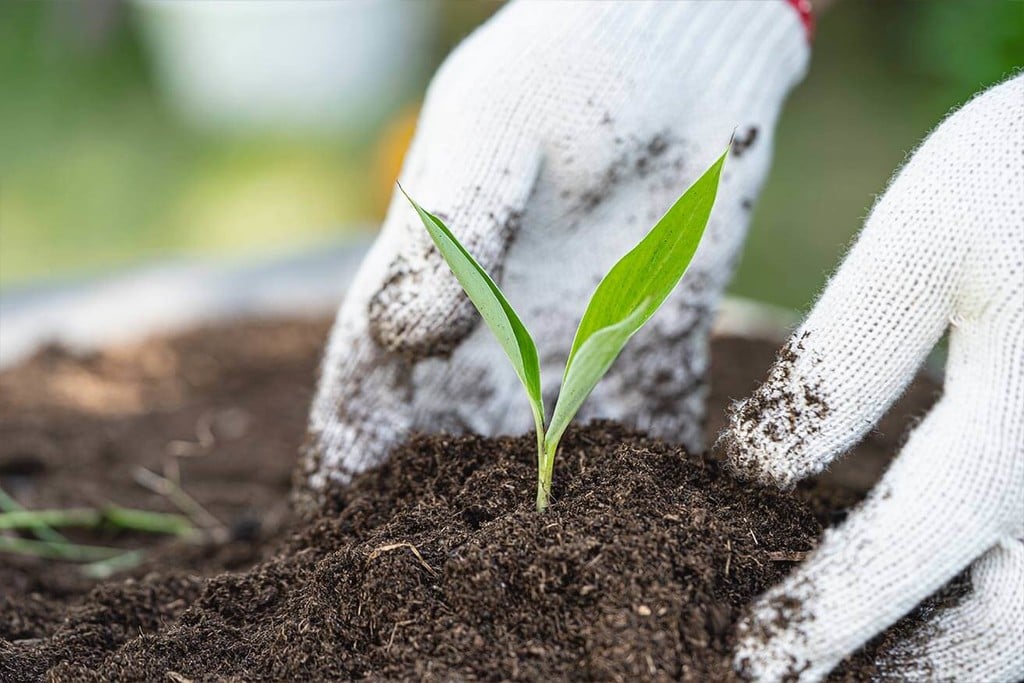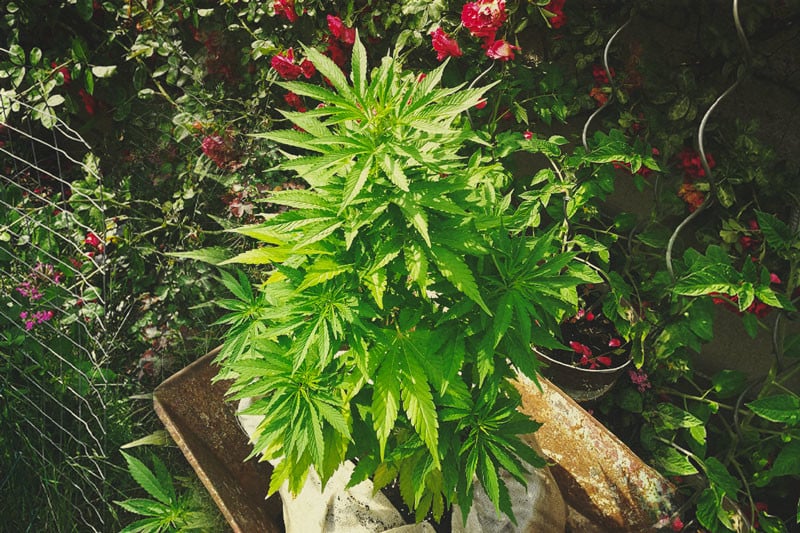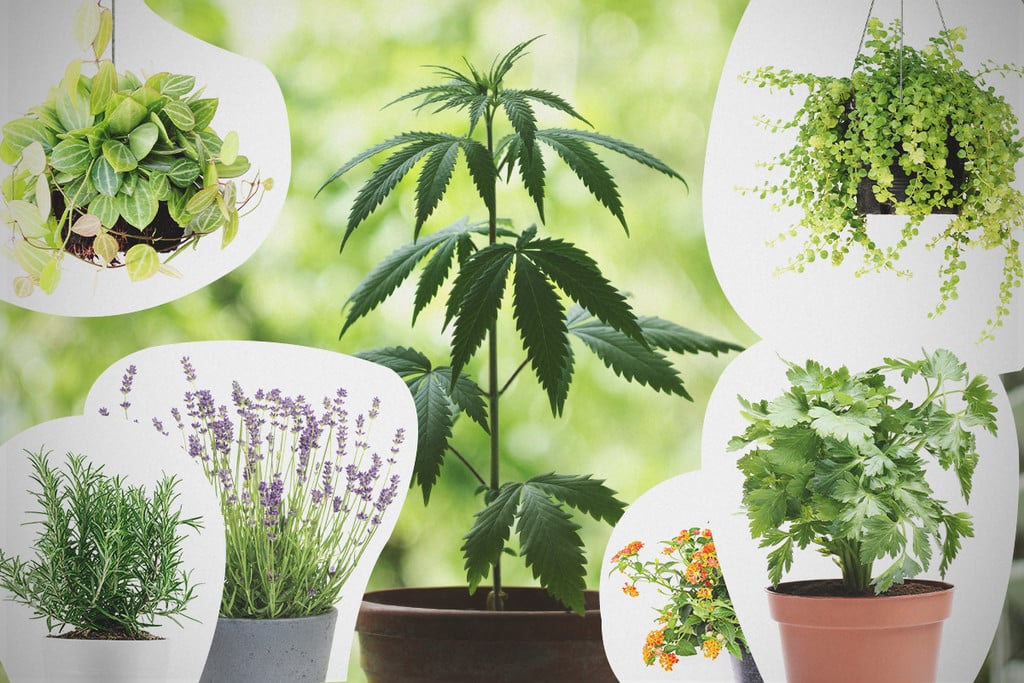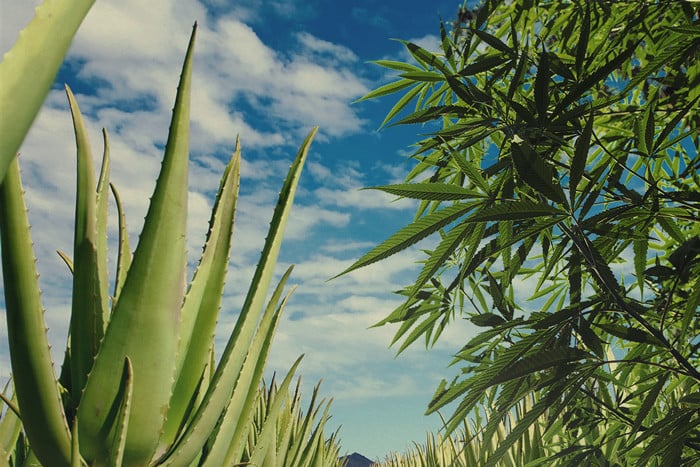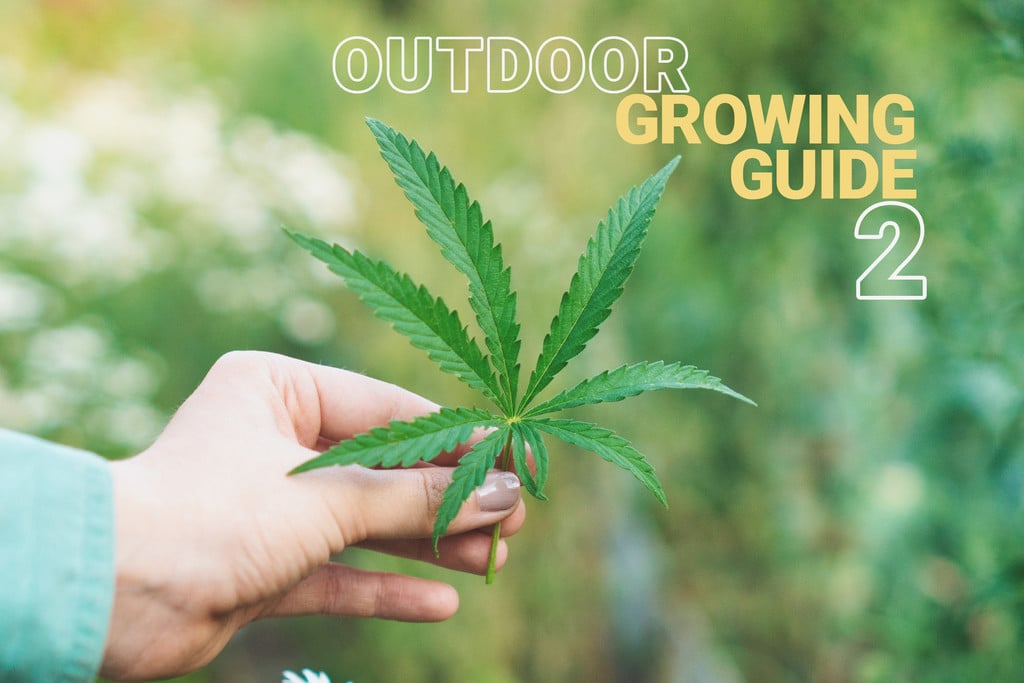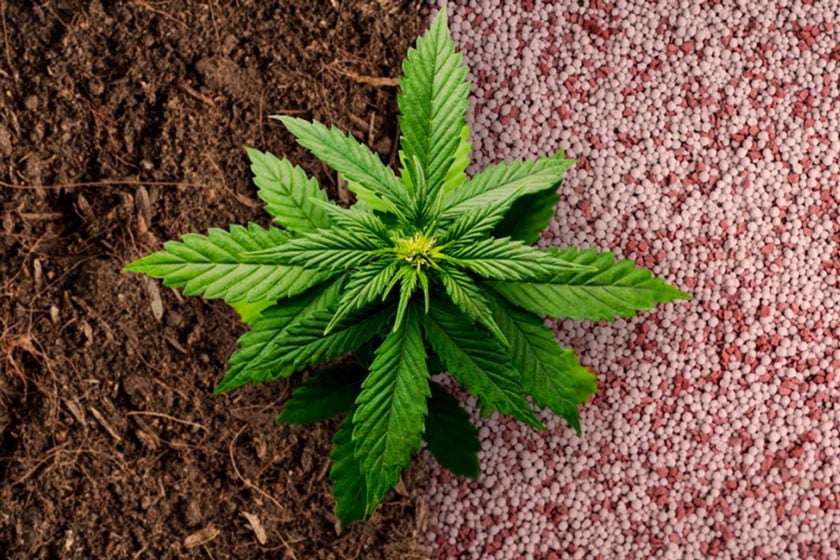.
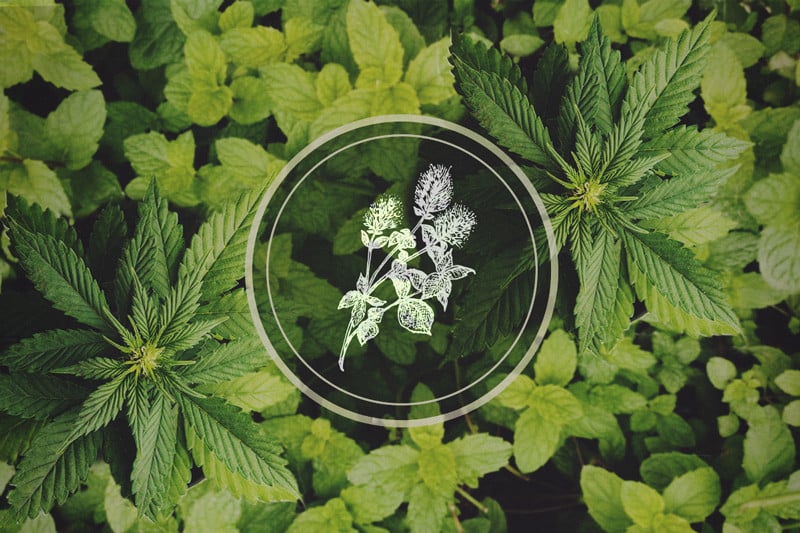
Peppermint In Your Cannabis Garden: The Benefits Of Companion Planting
Growing different plant species close to one another can prevent pests and enrich the soil. Peppermint makes a great companion plant for your cannabis garden, and is a popular ingredient in tasty recipes and essential oils. Here's what you need to know about peppermint and its presence in your cannabis garden.
Contents:
Sure, cannabis will grow in solitude, but it much prefers the presence of other plants. Beneficial companion species, including mint, help to drive away pests[4] and attract beneficial insects. Furthermore, the chemicals within mint are thought to potentially improve the terpene profiles of weed. Find out how to use mint to benefit your cannabis grow below.
What You Need to Know About the Mint Family
Peppermint is a humble herbaceous plant that contributes to the refreshing notes of mojitos, herbal teas, and salads.to the refreshing notes of mojitos, herbal teas, and salads. Even if you don’t see it, you’ll certainly recognize its distinctive taste when you take a bite or sip of a mint-containing dish or beverage. Along with other staple culinary herbs, including thyme, oregano, sage, and rosemary, mint belongs to the Lamiaceae family. Collectively, these plants underpin the pleasant flavors of countless gourmet creations.
What many of us refer to as mint is in fact a collection of plants belonging to the genus Mentha. Well-known species include spearmint (Mentha spicata), apple mint (Mentha suaveolens), and peppermint (Mentha x piperita).
Members of the mint family show up all over the world, from Europe and southern Africa to Asia and Australia. Whether out in nature or within the confines of a garden, they thrive near bodies of water in partial shade. Their perennial nature means they return year after year; gardeners rarely have to sow seeds to keep these plants going.
Mint species are a rich source of phytochemicals, containing a wealth of phenols, flavonoids, glycosides, and tannins. They also contain terpenes—the hydrocarbons that underpin the smells of cannabis—such as menthol, menthone, and cineole[5].
Past their culinary uses, many gardeners elect to grow mint based on its function as a companion plant. Anecdotal reports claim that mint species are effective at repelling pests[6] and enhancing the growth of neighboring plants.


Are Mint and Peppermint the Same?
Again, the term “mint” does not refer to a single plant species. Rather, it’s synonymous with “Mentha”, the entire mint genus. In contrast, “peppermint” refers to a specific plant species within this genus. As a hybrid, breeders created peppermint by crossing watermint and spearmint. Originally native to Europe, this species now grows all over the world. Traditional medicine systems have leveraged this species for digestive and respiratory problems[7]; ongoing studies are aiming to confirm these benefits.
What Are the Benefits of Mint in Your Cannabis Garden?
Sure, mint will make your garden smell great. But the scope of its impact goes far beyond a mere aromatic addition. Mint species are effective at driving away pest insects[8], concealing weed plants, and (possibly) improving the flavors of cannabis flowers. After you harvest your buds, you can also grab handfuls of mint leaves and bring them into the kitchen to fulfill all kinds of uses.
Pest Control
Next time you're around a mint plant, rub a leaf between your fingers and take a moment to smell the goodness. This aroma stems from compounds that are produced for several reasons—including plant defense. As secondary metabolites, they’re not directly involved in growth and reproduction, but they play an important role in plant survival.
Among many different phytochemicals, mint plants contain myriad terpenes. These volatile hydrocarbons are essentially agents of chemical warfare. Because they smell so potent, they work to discourage herbivorous insects[1]. Those hungry enough to sink their mouthparts into plant tissue suffer the consequences, as some terpenes inflict toxic effects that disrupt feeding and reproduction. These chemicals are also capable of changing insect behaviour by making them less able to detect certain plants.
Mint plants might also alert your cannabis plants when pest insects are on the prowl. When insects attack plant tissue, they trigger the release of volatile terpenes[9] into the air. These molecules work as signals to alert nearby plants, which causes them to boost the production of toxic chemicals crafted to deter insects.
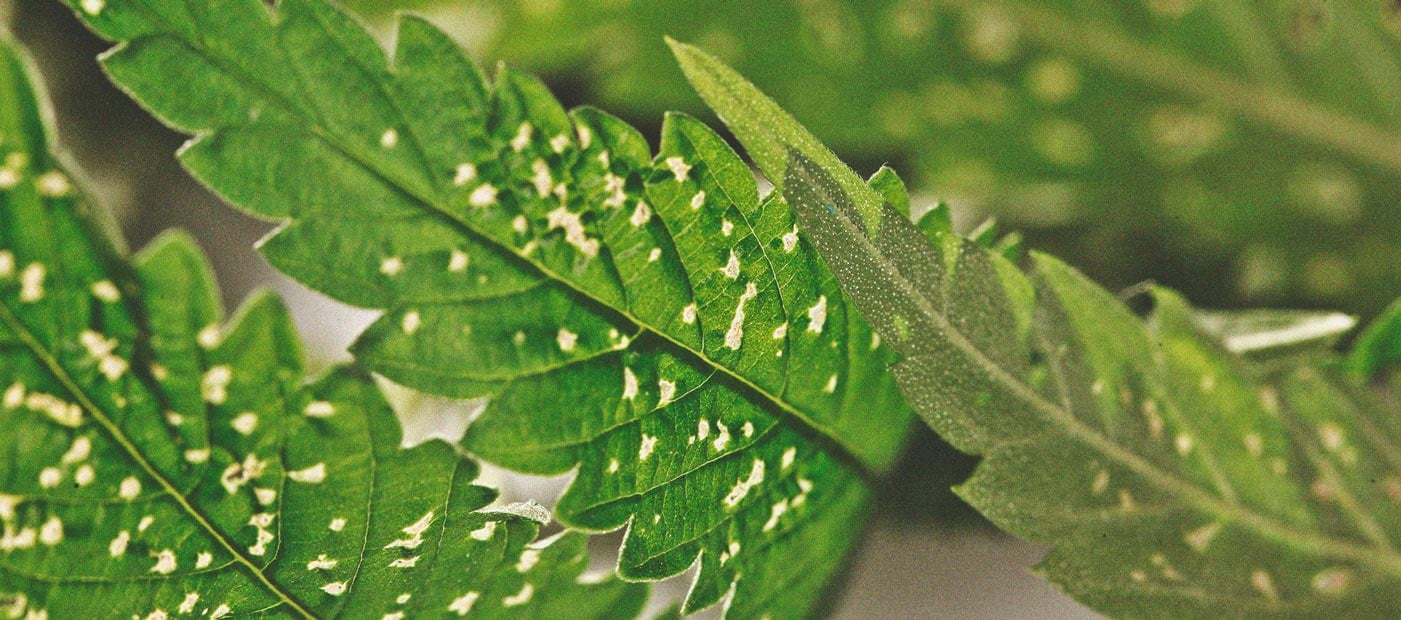
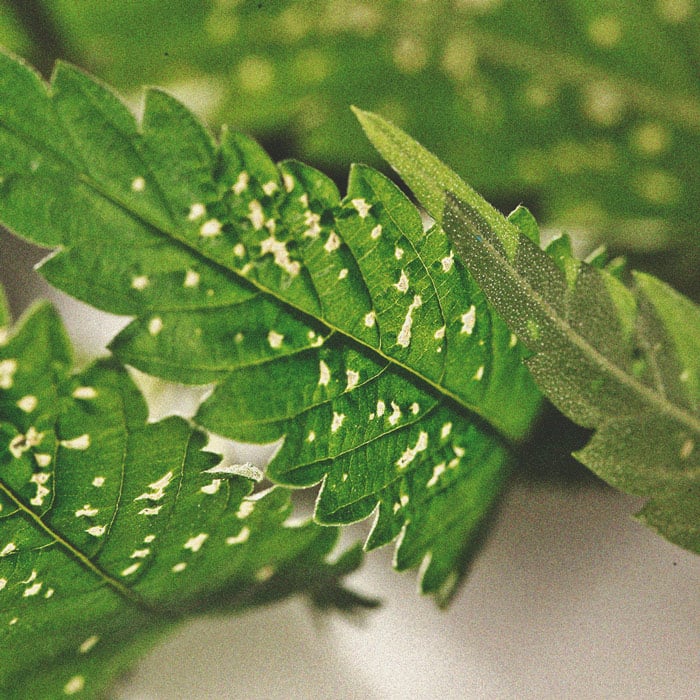
Aromatic Camouflage
The cannabis plant produces over 150 different terpene compounds that contribute to the great diversity of aromas and flavors of each variety. The potent “skunky” aroma that can easily give a growing operation away, however, is underpinned by volatile sulphur compounds[2].
Fortunately, mint also emits a strong and recognisable aroma that can mask your weed. You can smell it growing from several metres away, and larger plants can send their volatile compounds much further. Plant enough of them around your cannabis garden, and you’ll partially mask the obvious scent of weed during the flowering stage of the growing cycle.
Holistic and Culinary Uses
There are reasons to grow mint in your garden past protection and camouflage for your weed plants. This robust and useful herb serves as an important ingredient in several recipes, and also boasts holistic potential. Snip a few sprigs from your mint plant whenever you want to throw together any of the following:
- Mint water 🚰
- Pesto 🍲
- Soups 🍜
- Salads 🥗
- Syrup 🍯
- Tea 🍵
- Mojito 🍹
- Ice cream 🍦
Some mint species have a long history of therapeutic use within certain populations. Indigenous people of the Andes value the South American mint genus Minthostachys for its perceived medicinal qualities[3]. Ongoing studies are exploring the potential of mint and its myriad molecules in the following contexts:
-Digestion

-Respiratory problems and sore throat

-Antimicrobial potential

-Aches and pains

-Stress


Improving the Taste of Cannabis
This one sounds quite far-fetched—but hear us out! As alluded to above, it turns out that some plants release terpenes into the air[10] when they’re under attack. Instead of a scream of pain, this aromatic ejection serves as a warning sign to nearby vegetative neighbors. Upon detecting this, other plants start to ramp up the production of secondary metabolites that help to combat biotic (living) and abiotic (non-living) forms of stress.
Based on this, some growers claim that planting mint and other aromatic herbs close to cannabis creates more favorable terpene profiles. No—the terpenes from mint don’t physically land on cannabis flowers and taint their flavors. Instead, they simply react to the terpenes of other plants and modulate their production of these molecules. While studies are lacking on the specific chemical interplay between mint and cannabis, science has confirmed the signalling power of terpenes.
Cannabis Companion Planting: How to Grow Mint
After discovering the role mint can play in a cannabis garden, you’re probably eager to get some seeds into the soil. Below is a simple guide to establishing a healthy mint plant population.
If you’ve come across this article in the early spring, then you’ll have ample time to sow some mint seeds. Place seeds into a seedling tray filled with light soil mix around 8–10 weeks before the last frost in your region. Cover them with 0.5cm of soil and mist them lightly. Use a heat mat, if required, to keep them at a consistent temperature of 21°C, and they’ll sprout within 1–2 weeks.
As soon as they sprout, place them under a grow lamp, or onto a windowsill that receives direct sunlight for at least a few hours each day. Once the last frost passes, you can transplant them into larger containers outdoors.
If you’re already partway through the growing season, don’t worry! You can find plug plants in most nurseries. Alternatively, ask a friend for a cutting and propagate it in a glass of water until roots emerge.
Can Mint Be Grown With Other Plants?
Absolutely! You can grow mint together with a range of other herbs, including cannabis, oregano, lavender, dill, basil, rosemary, and sage. All of these species have different constituents that make up their essential oils. Because of this, they attract and repel different insect species. Having a polyculture of different herbs all growing together offers the best defense against pests, and is the best attractant to beneficial predators and pollinators.
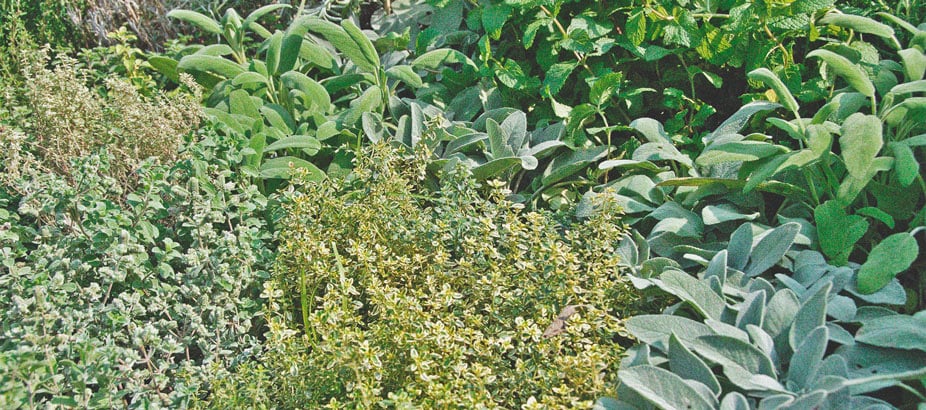
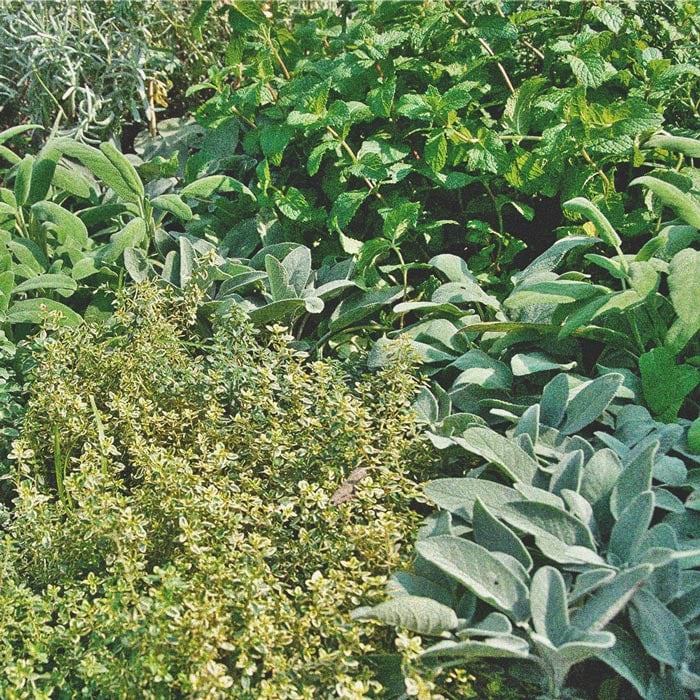
What Are the Risks of Growing Mint in Your Cannabis Garden?
While mint offers some serious benefits to your cannabis garden, you need to take precautions to ensure growing this herb doesn’t backfire. As hardy perennials, many species of mint will come back season after season by surviving as rhizomes in the ground. While this ensures a consistent supply of fresh mint leaves, these subterranean structures can rapidly take over garden beds. Leave them to their own devices, and mint plants will quickly crowd out other species in the garden.
For this reason, you should only grow mint in containers and pots, as opposed to raised beds or directly in the ground.
Cannabis and Mint: Living in Harmony
Mint species are key allies within cannabis gardens, so long as they are grown with their invasive tendencies in mind. Their essential oils, packed with terpenes such as menthol, help to drive away aphids and other pests. They also pump out terpenes when under attack, alerting neighboring plants of a potential threat. Of course, access to fresh mint leaves every day also makes them a must-have herb for every garden!
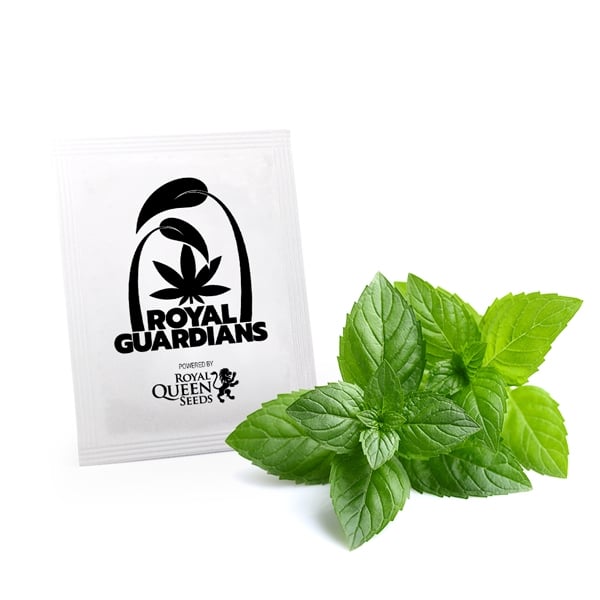
Be as smart as an ancient Egyptian and grow multi-purpose peppermint in your garden.
Buy Peppermint Royal Guardians
Be as smart as an ancient Egyptian and grow multi-purpose peppermint in your garden.
- https://www.ncbi.nlm.nih.gov/pmc/articles/PMC8199371/
- https://www.sciencedaily.com/releases/2021/12/211201085147.htm
- https://pubmed.ncbi.nlm.nih.gov/18579110/
- https://onlinelibrary.wiley.com/doi/10.1111/tpj.14077
- https://onlinelibrary.wiley.com/doi/10.1002/fft2.53
- https://doi.org/10.1111/tpj.14077
- https://doi.org/10.3390%2Fmolecules26041118
- https://doi.org/10.1002/ps.6681
- https://doi.org/10.29312/remexca.v10i3.678
- https://doi.org/10.1111/tpj.15453


























